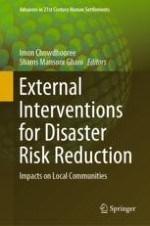Abstract
This chapter introduces some of the key issues facing scholars and practitioners of disaster risk reduction (DRR) in urban areas, which are now home to over half of the global population. After a brief introduction, the chapter defines cities as socio-technical systems distinguished not only by their large populations but by containing a diversity and concentration of institutional structures, cultures, and industries. There is much variety among cities as well as within them, with wide ranges on many factors, including size, governance type and quality, and wealth. The next section explores the risks that exist in cities. The authors argue that many of the aspects of risks are the results of human decisions. This includes decisions that increase potential exposure to hazards and people’s vulnerabilities to them, such as land use policies, natural resource management, building regulations, and the provision of social services. The result of such decisions often leaves poor and marginalized people more exposed and more vulnerable to the wide spectrum of hazards that impact cities. These hazards generally fall into three categories: natural hazards (e.g., earthquakes and floods), human-caused yet unintentional hazards (e.g., transportation accidents and industrial accidents), and intentional human-caused hazards (e.g., war and terrorism). But the line between these types are often unclear, as neglect, negligence, corruption, poor planning, and lax enforcement raise questions of human culpability in the production of disasters triggered by seemingly natural hazards. The next section discusses potential solutions for addressing urban risks. The authors warn, however, that the interaction of hazards, vulnerabilities, and capacities in every city is unique, which means that there is no single ‘formula’ for successful urban DRR. With this caveat in mind, the authors raise exciting paths forward for DRR based on complexity approaches, climate change adaptation, governance, technology, and a focus on equity.
